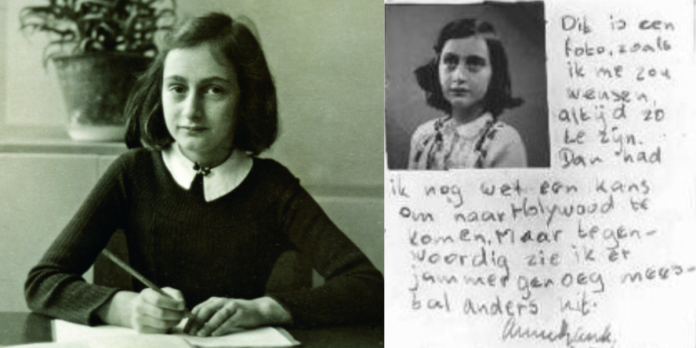
Born on June 12, 1929, in Frankfurt, Germany, Anne Frank lived a normal life until the rise of the Nazi regime. As Adolf Hitler’s influence spread, anti-Semitic policies became harsher, forcing Anne’s family to flee to Amsterdam to escape persecution. However, even in their new sanctuary, they couldn’t evade the clutches of hatred forever.
Anne and her family went into hiding for two years to avoid Nazi persecution.
In July 1942, sensing the increasing danger, Anne’s family, along with another Jewish family, went into hiding in a secret annex above her father’s business premises. The cramped and stifling quarters became their refuge for two years. With blackout curtains drawn, they lived in constant fear of being discovered. Anne, despite the circumstances, held onto her dreams, her hopes, and her spirit.

Her documentation of this time is now published in The Diary of a Young Girl.
Within the confines of their hideout, Anne found solace in her diary. She poured her heart and thoughts onto its pages, addressing it as a dear friend she named “Kitty.” In her diary, Anne documented not only the hardships and fears they faced but also the dreams and aspirations that sustained her. Her writing revealed her intellect, her wit, and her emotional depth – a stark contrast to the horrors unfolding beyond the annex walls.
The Diary of a Young Girl serves as a haunting reminder of the atrocities of the Holocaust, providing a firsthand account of life in hiding and the psychological toll it took. Through Anne’s words, readers gain insight into the daily struggles and emotional turmoil experienced by those forced to live in silence and darkness. The diary’s rawness makes it a powerful tool for educating future generations about the horrors of hatred and the importance of empathy.

Anne’s resilience and hope shine through even in the darkest moments.
Despite the constant fear of being discovered, Anne never let go of her dreams. She aspired to be a writer, a journalist, and to help heal the world through her words. Her belief in the goodness of humanity and her desire to make a positive impact remained unwavering, serving as a testament to the strength of the human spirit in the face of adversity.
Tragedy struck in 1944 when the hiding place was betrayed, leading to their arrest.
Anne and her family were betrayed, and on August 4, 1944, the Gestapo stormed the annex, ending their two years in hiding. The occupants were arrested and sent to concentration camps. Anne and her sister Margot were later transported to Bergen-Belsen, where they both succumbed to typhus in early 1945, just weeks before the camp’s liberation.
Also Read: India’s First Female Shattering Glass Ceilings in Engineering

Anne’s legacy lives on as a symbol of the Holocaust’s human face.
After the war, Anne’s father, Otto Frank, was the only surviving member of the family. Upon his return, he discovered Anne’s diary and fulfilled her dream of becoming a writer. He published her diary, preserving her voice and experiences for the world to hear. The diary’s profound impact has made Anne Frank a symbol of the millions of innocent lives lost during the Holocaust.
Through her words, Anne transformed personal suffering into a universal call for empathy and understanding. Her ability to find beauty and hope in the midst of despair serves as a reminder that even in the darkest of times, the human capacity for resilience and compassion can prevail. Anne’s legacy lives on, urging us to never forget the past and to strive for a world where such tragedies can never occur again.
Also Read: Transforming Agriculture Waste into Sustainable Eco-Friendly Batteries
